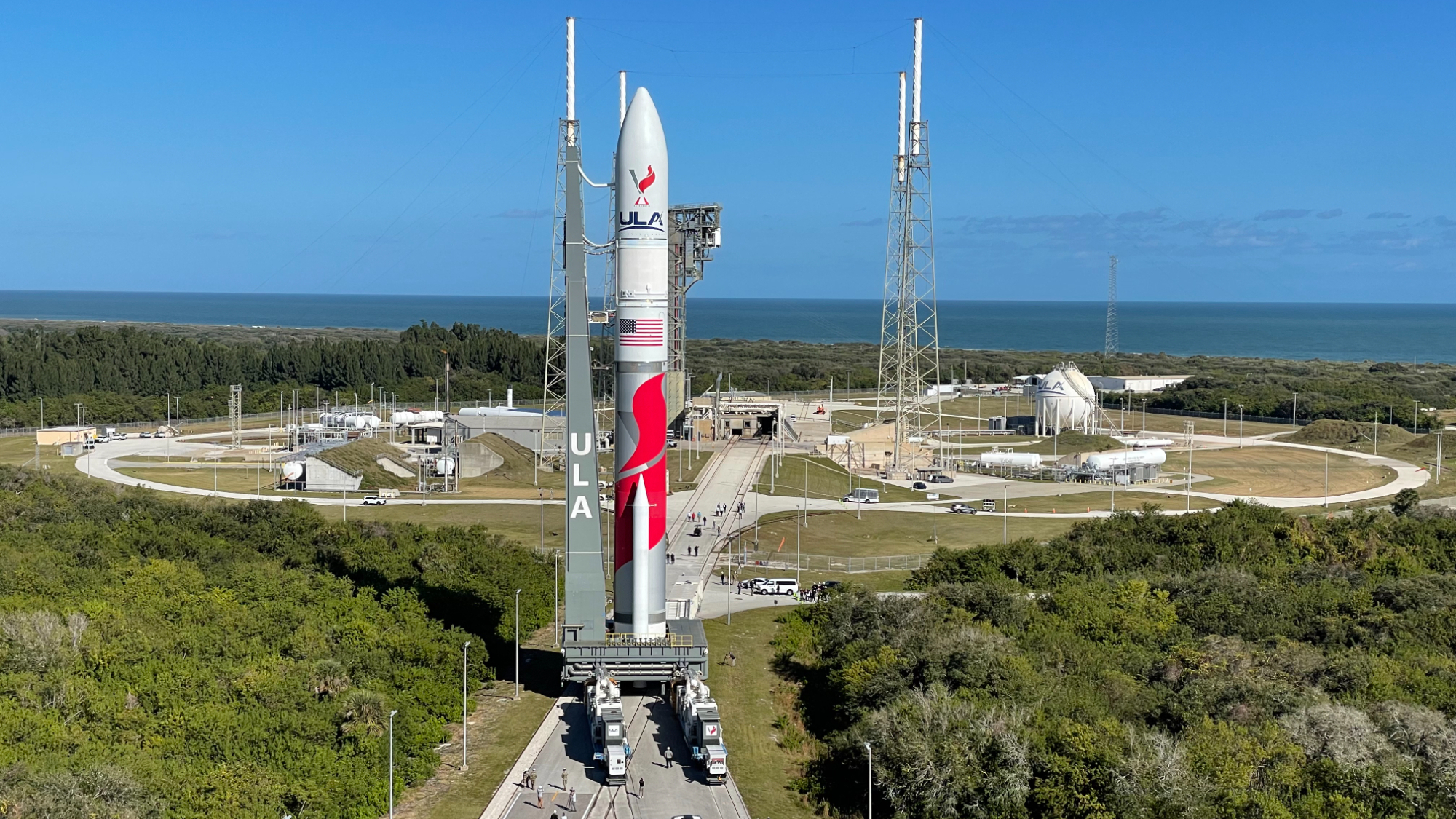
A brand-new rocket and a private moon lander are ready to make their spaceflight debuts.
United Launch Alliance (ULA)'s Vulcan Centaur rocket is now officially scheduled to launch the robotic Peregrine lunar lander from Florida's Cape Canaveral Space Force Station on Monday (Jan. 8) at 2:18 a.m. EST (0718 GMT), on the first-ever mission for both vehicles.
"Yesterday, we completed the launch readiness reviews," Gary Wentz, vice president of government and commercial programs at ULA, said during a press conference today (Jan. 5).
"They were successful, and all the teams gave us a go to proceed," he added. "We're on track for a planned 2:18 a.m. local Monday morning launch. We're not working any issues."
Mother Nature looks set to cooperate as well: Current forecasts suggest an 85% chance of weather good enough for launch on Monday, Melody Lovin, launch weather officer at Cape Canaveral Space Force Station's 45th Weather Squadron, said during the briefing. You can watch the liftoff live here at Space.com, courtesy of NASA TV.
Related: 10 exhilarating spaceflight missions to watch in 2024
Peregrine, which was built by the Pittsburgh company Astrobotic, will make its way to the moon for a planned Feb. 23 landing attempt.
Get the Space.com Newsletter
Breaking space news, the latest updates on rocket launches, skywatching events and more!
Success in that endeavor would be epic: No private spacecraft has ever aced a soft touchdown on the moon before. (Several have tried, including Israel's Beresheet probe in April 2019 and Hakuto-R, from the Tokyo company ispace, four years later.)
Peregrine is flying as part of NASA's Commercial Lunar Payload Services (CLPS) program, which aims to help pave the way for the agency's crewed return to the moon. NASA intends to establish a permanent, sustainable human presence on and around Earth's nearest neighbor by the end of the 2020s, via its Artemis program.
The agency is sending five scientific payloads to the lunar surface aboard Peregrine on this flight, including navigation gear and instruments that will hunt for water ice near the landing site. Germany's space agency, known by the German acronym DLR, has placed a radiation-measuring experiment on board as well.
Peregrine's mission is the opening act for CLPS; other private landers will carry a variety of NASA science gear to the lunar surface over the next few years, if all goes according to plan.
"We think that this is a great approach to leverage entrepreneurship and innovation in the American industrial base," Joel Kearns, deputy associate administrator for exploration in NASA's Science Mission Directorate, said during today's briefing.
"And we think it's going to help build, eventually, a group of service providers that can do that not just for NASA, but others in the United States and the world and eventually build a larger lunar economy," he added.
Peregrine is also carrying commercial payloads on this mission, including memorial capsules arranged by the companies Celestis and Elysium Space. The Navajo Nation has objected to this cargo, saying the deposition of human remains on the moon would desecrate a body that many Indigenous people regard as sacred.
ULA sees the 202-foot-tall (62-meter-tall), two-stage Vulcan Centaur as its workhorse of the future. The new rocket will replace the company's venerable Atlas V and Delta IV launchers, which have lofted many high-profile spacecraft over the years, including NASA's Curiosity and Perseverance Mars rovers.
The Vulcan Centaur was originally supposed to fly for the first time in 2019, but several problems pushed its debut back.
For example, there were development issues with Blue Origin's new BE-4 engine, which powers the rocket's first stage. In addition, a Vulcan Centaur upper stage exploded during testing at NASA's Marshall Space Flight Center in Alabama this past March, spurring ULA to modify the rocket that was being prepped for flight.
Join our Space Forums to keep talking space on the latest missions, night sky and more! And if you have a news tip, correction or comment, let us know at: community@space.com.

Michael Wall is a Senior Space Writer with Space.com and joined the team in 2010. He primarily covers exoplanets, spaceflight and military space, but has been known to dabble in the space art beat. His book about the search for alien life, "Out There," was published on Nov. 13, 2018. Before becoming a science writer, Michael worked as a herpetologist and wildlife biologist. He has a Ph.D. in evolutionary biology from the University of Sydney, Australia, a bachelor's degree from the University of Arizona, and a graduate certificate in science writing from the University of California, Santa Cruz. To find out what his latest project is, you can follow Michael on Twitter.









